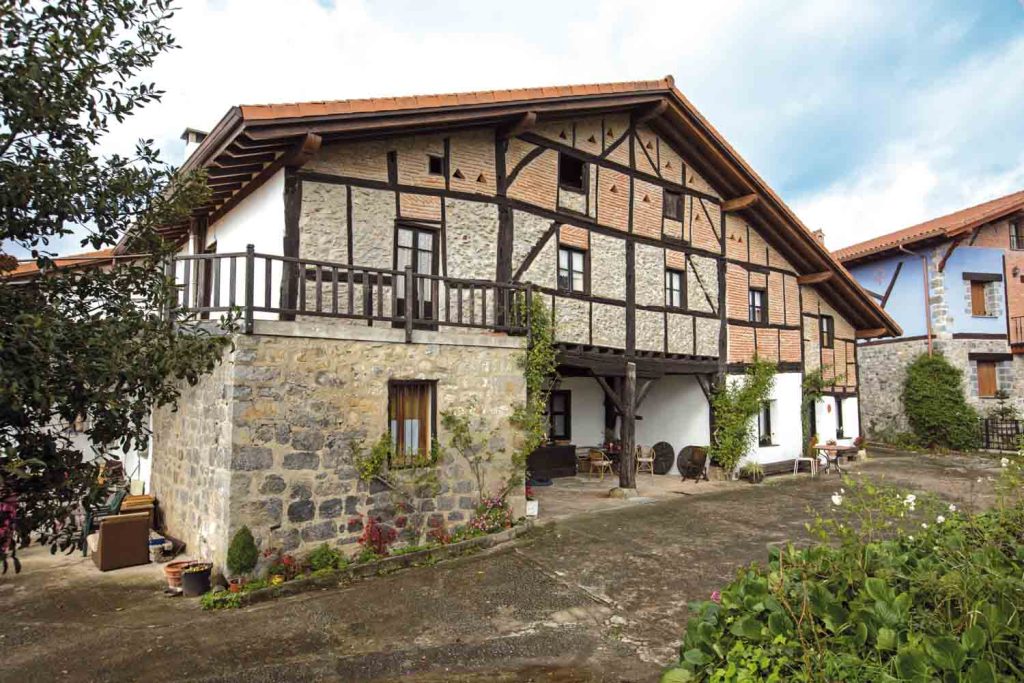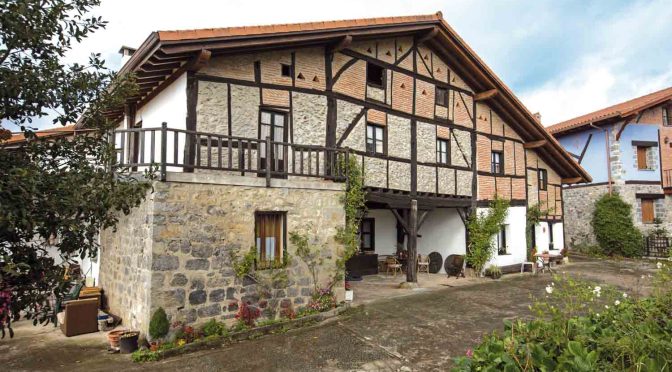The baserri, or Basque farm house, is a defining feature of the Basque Country. A self-sufficient family enclave, it did more than give the family a place to sleep and eat. For example, it held the animals, their body heat warming the rooms upstairs. The baserriak that dot the Basque mountains provide a distinctive charm that gives the Basque Country much of its character. Given the importance of the baserri to Basque life, it is no wonder that the entrance to the Basque domicile has its own special role.

- The entrance of the baserri almost always faces to the south-east, away from the weather. In some baserriak, the portal can take up to a third of the façade, requiring a central support. It was often painted red and white, with the white made from lime plaster while the red was made up of a mixture of olive oil, red ochre, and ox blood.
- In many baserri, there is an atalburu or ateburu above the door (from atari=doorway and buru=head). A type of lintel, the atalburu, at least in Nafarroa Beherea, is a stone that is often engraved with facts about the house: the year of construction, the name of the spouses, and various designs. The name of the house isn’t usually engraved on the atalburu, at least not in older houses. In more modern construction, the atalburu sometimes does contain the name of the house.
- Instead, the name of the house, which every house has and from which many Basque surnames derive, is often placed with the armarriak, or the coat-of-arms. The presence of the armarriak on the front of the house is more typical of Hegoalde.
- Doors are often decorated with an eguzkilore, a “sunflower,” a dried silver thistle (not an ekilore, what in English would be called a sunflower). The belief was that was that some mischievous or malevolent spirits, such as lamiak, were active at night. By putting the eguzkilore on the door, this confused these spirits, making them think that the sun was out, and thus protecting the house.
Primary sources: Atalburu, Wikipedia; Baserri, Wikipedia; Ateburu, Wikipedia
Discover more from Buber's Basque Page
Subscribe to get the latest posts sent to your email.


